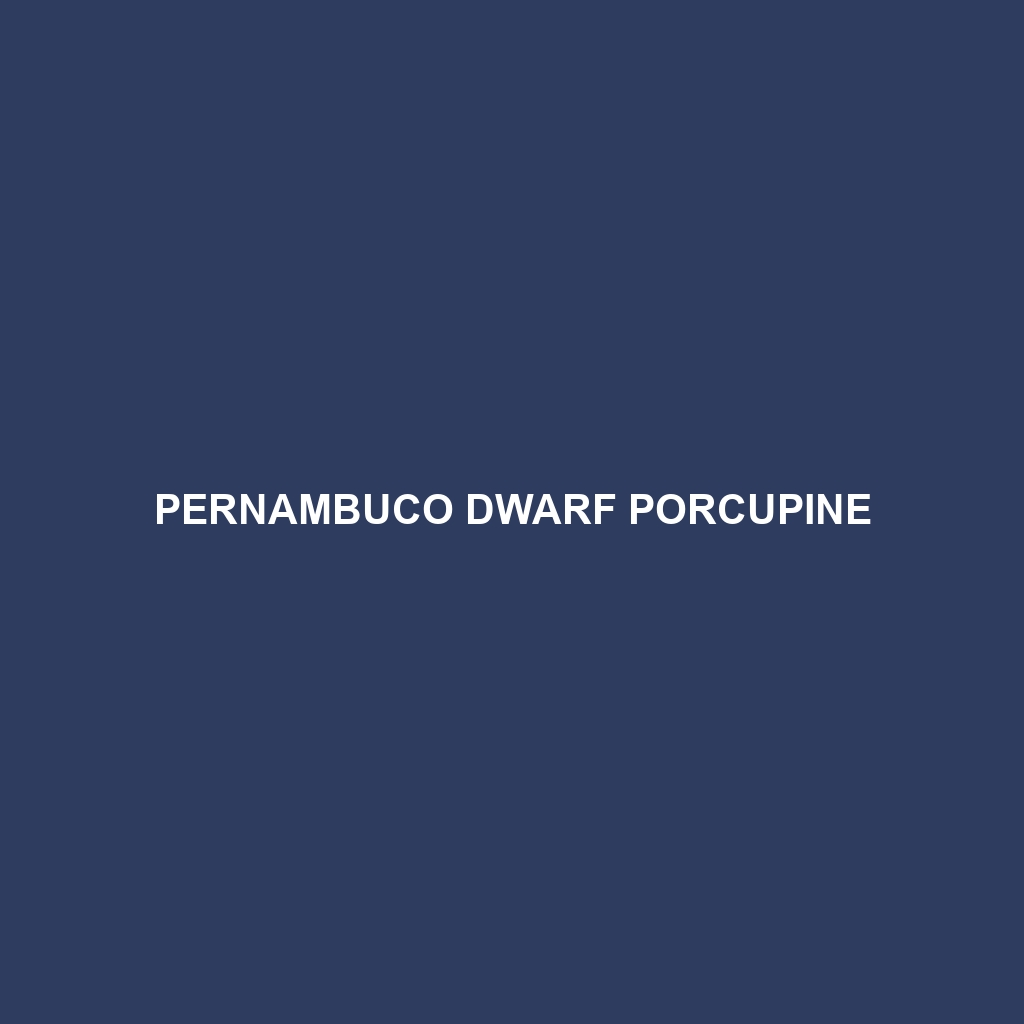Pernambuco Dwarf Porcupine
Common Name: Pernambuco Dwarf Porcupine
Scientific Name: Coendou prehensilis
Habitat:
The Pernambuco Dwarf Porcupine is primarily found in the **Atlantic Forest** of Brazil, particularly within the states of **Pernambuco** and **Paraíba**. This species thrives in tropical humid forests, where dense vegetation and a warm climate provide an ideal habitat. They are often spotted in **tree canopies**, leveraging heights for both safety from predators and access to food sources.
Physical Characteristics:
The Pernambuco Dwarf Porcupine is a small-sized rodent, measuring about **30 to 40 centimeters** (12 to 16 inches) in length, excluding the tail. It is characterized by its **short, spiny fur** that is mainly brown to dark brown, with some individuals exhibiting a yellowish or greyish hue. Notably, they possess **long quills** that serve as a defense mechanism against predators, and their stout bodies are adapted for climbing, with sharp claws aiding their arboreal lifestyle.
Behavior:
This species is primarily **nocturnal**, being most active during the nighttime hours. The Pernambuco Dwarf Porcupine typically engages in solitary behavior, although it may be seen in pairs during mating seasons. They are excellent climbers and spend much of their time in the trees, using their prehensile tails for balance. Their adaptations make them **well-suited** for foraging in the dense foliage of their habitat.
Diet:
As herbivores, Pernambuco Dwarf Porcupines have a diet that consists mainly of **leaves**, **fruits**, and **bark**. They are particularly fond of various fruits native to the Atlantic Forest, which they consume by stripping the bark off trees to access the softer inner tissues. Their feeding habits play a crucial role in seed dispersal, making them important contributors to the ecosystem’s health.
Reproduction:
The reproduction of Pernambuco Dwarf Porcupines typically occurs during the rainy season, peaking between **January and March**. After a gestation period of roughly **110 to 130 days**, females give birth to a single offspring, although twins may occur rarely. The young are born with soft spines and remain dependent on their mother for several months, learning to navigate their arboreal environment as they grow.
Conservation Status:
The Pernambuco Dwarf Porcupine is currently listed as **Vulnerable** by the **IUCN Red List**, primarily due to habitat loss driven by deforestation for agriculture and urbanization. Conservation efforts are critical to protect this unique species and its diminishing habitat.
Interesting Facts:
One fascinating aspect of the Pernambuco Dwarf Porcupine is its ability to **rotate its tail** 360 degrees, which aids significantly in climbing and maintaining balance. They can also store fat in their tails, allowing them to survive off foraged food during periods when resources are scarce.
Role in Ecosystem:
Pernambuco Dwarf Porcupines play a vital role in their ecosystem by acting as **seed dispersers**. Their feeding habits help to promote the growth of various plant species, thereby maintaining the health of the Atlantic Forest. Furthermore, they serve as prey for larger predators, contributing to the balance of their food web.
